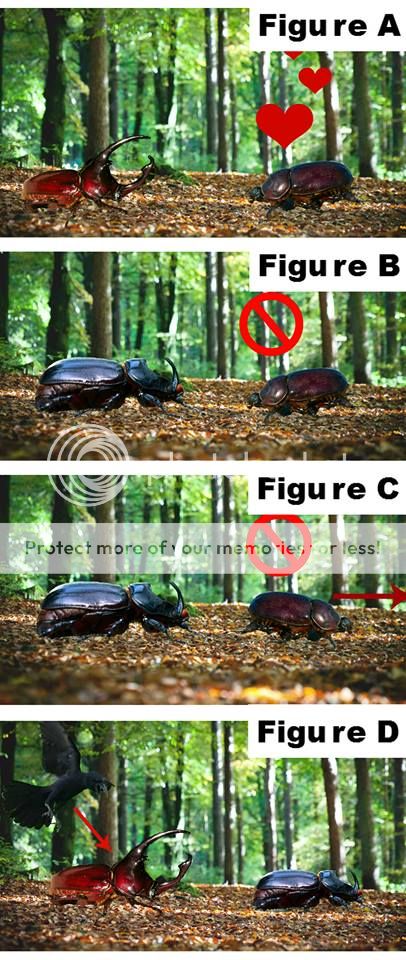Contributed by Sara Allison, Md Saon, Hassan Jassani, Siraj Quad
There is a general misconception that evolution has some sort of directionality associated with it where natural selection pushes organisms only to improve over time towards perfection. The misconception assumes that evolution only produces traits that the organism needs to survive and live long lives. This, however, is not entirely accurate, nor is it the whole story. Natural selection acts on random mutations and selects the ones that best help the organism to survive in a given environment or ones that increase its reproductive fitness. The traits selected for may not be perfect, but are good enough to be maintained through selective pressures. We will focus on a secondary sexual characteristic and sexual cannibalism as evidence for the fact that evolution is not perfect, in that there are not only benefits but also costs for these characteristics.
One example of a trait that is not perfect or optimal for the survival of the organism is the male rhinoceros beetle’s increased horn size. In general, males’ horns tend to be bigger than females’; females prefer males with bigger horns. This trait is not perfect because of the fact that bigger horned rhinoceros beetles experience increased predation, in spite of the trait’s evident advantage when it comes to sexual selection. Thus, the trait is advantageous because it helps males acquire mates and reproduce. However, it is also costly since males with bigger horns have an increased risk of predation. The reason this trait has been favored in spite of its imperfection is because the benefit of big horns being preferred by females outweighs the cost of increased predation through an increase in the number of offspring.

Figure A shows that the big horned male rhinoceros beetle has attracted the female beetle and has a high probability of mating with her—a benefit of big horns. Figure B shows that a smaller horned beetle has failed to attract the same female. Thus, Figure C shows this female fleeing from the small horned beetle without mating with him. Figure D shows that the big horned male receives more predatory attacks than the small horned beetle—a cost to having big horns.
Another example of imperfection in evolution is the evolution of sexual cannibalism, which is an extreme form of sexual conflict that involves the killing and consumption of the mate either before mating or after mating. It is possible that the occurrence of sexual cannibalism is influenced by low prey availability, which motivates the individual to eat its mate to obtain sustenance—this is known as the foraging hypothesis. Consequent benefits can include an increase in body mass, a healthier body condition, or increased reproductive ability. A study of the orb-web spider demonstrated that sexual cannibalism increases offspring survival, in which cannibalistic females produced offspring with longer survival times than females that were prevented from consuming their mate. Although there are benefits, there are also very significant costs. Eliminating the father means a definite loss of any potential paternal care. Additionally, cannibalism can occur before mating and, therefore, cause reproductive failure. In short, the evolution of sexual cannibalism comes with costs and benefits.
The evolution of the big horned male rhinoceros beetle and sexual cannibalism epitomizes the imperfect nature of evolution. Both traits are not perfect in that they come with significant costs. They are maintained because the benefits of each trait outweigh the costs.
For more information, see:
McCullough, Erin L., and Douglas J. Emlen. “Evaluating the costs of a sexually selected weapon: big horns at a small price.” Animal Behaviour 86.5 (2013): 977-985.
Wu, Lingbing, et al. “Factors influencing sexual cannibalism and its benefit to fecundity and offspring survival in the wolf spider Pardosa pseudoannulata (Araneae: Lycosidae).” Behavioral ecology and sociobiology 67.2 (2013):205-212.
Newman, Jonathan A, and Mark AElgar. “Sexual Cannibalism in Orb-Weaving Spiders: An Economic Model.” American Naturalist, The 138.6 (1991):1372-1395.
